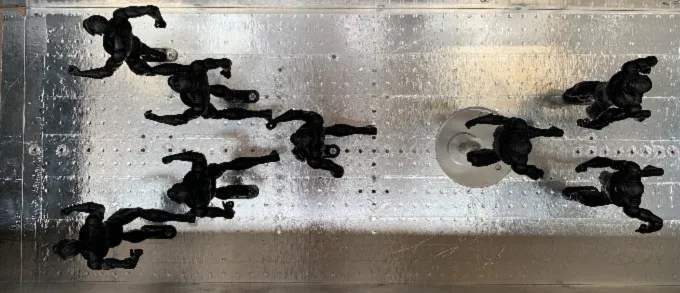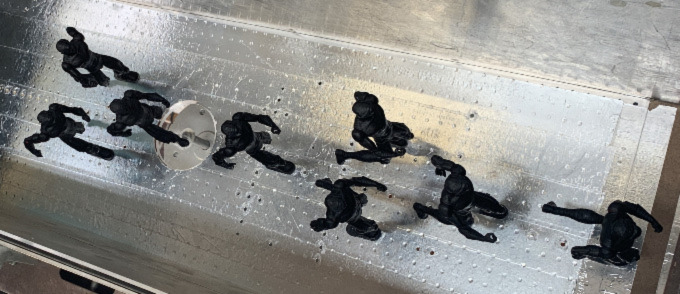
In 2019 in Vienna, elite runner Eliud Kipchoge finished an unofficial marathon in under two hours.
Alex Halada/AFP/Getty Images
- More than 2 years ago
In an unofficial race in Vienna in 2019, Kenyan long-distance runner Eliud Kipchoge became the first person ever to run a marathon in under two hours. A new study shows how teamwork made that feat possible.
Kipchoge ran with a rotating posse of pacers, other runners who deflected some of his air resistance in a process known as drafting. Now, wind tunnel tests with action-figure manikins suggest that those pacers saved him 3 minutes and 33 seconds — dropping him below the two-hour mark to 1:59:40 — researchers report August 16 in Proceedings of the Royal Society A. An alternative configuration of pacers could have given Kipchoge an even bigger boost, cutting an additional 49 seconds, the team proposes.
Elite marathon runners are often accompanied by team members who swap in and out to keep them on pace. Scientists know from experiments on live participants and from computer simulations that running between these pacers can reduce an athlete’s drag.
In the new study, mechanical engineer Massimo Marro of the École Centrale de Lyon in France and colleagues measured the drag force felt by manikins in a wind tunnel, which allowed the team to test different drafting configurations readily. Inside the tunnel, the team replicated Kipchoge’s 2019 formation, which featured five pacers in a V in front with two more in the rear. This arrangement reduced about half the drag felt by the athlete — enough to trim about three and a half minutes off his time, the team found.
Running formations that reduce air resistance


Testing different formations of action-figure manikins in a wind tunnel shows how setting up a phalanx of pacers can diminish drag from air resistance, allowing a runner to go faster. In a set-up (left) mirroring the runners in Eliud Kipchoge’s unofficial sub-two-hour 2019 marathon in Vienna, five manikins create a V in front of the runner (gray circle). A formation that deploys the five forward pacers in more of a lowercase-t formation (right) is even more optimal, the researchers demonstrate.
Credit: École Centrale de Lyon/LMFA UMR 5509
The researchers also identified three new formations that could further maximize performance.
Rather than a V, the winning design sets the five pacers in front in a formation shaped like a lowercase t: one pacer behind another, followed by two side-by-side, and then one more behind that pair. The researchers estimated the drag Kipchoge would have felt running alone at his marathon speed to calculate the predicted savings from this new formation: 4 minutes, 22 seconds.
“You can sort of slice through the air with a narrower wedge” using this formation, says Rodger Kram, a physiologist at the University of Colorado Boulder who was not involved with the research. “That’s quite innovative.”
While official races typically allow runners only two or three pacers, Kram suggests competing athletes could make use of “cooperative drafting” — taking turns coasting in each other’s shadows to boost performance.
In September, Kipchoge and his competitors will attempt to break the two-hour barrier in a professional race for the first time in Berlin, where in 2022 Kipchoge set the current official record of 2:01:09.
“The limit is close, but it’s not reached,” Marro says. “These collaborative strategies could help to improve the record.”







